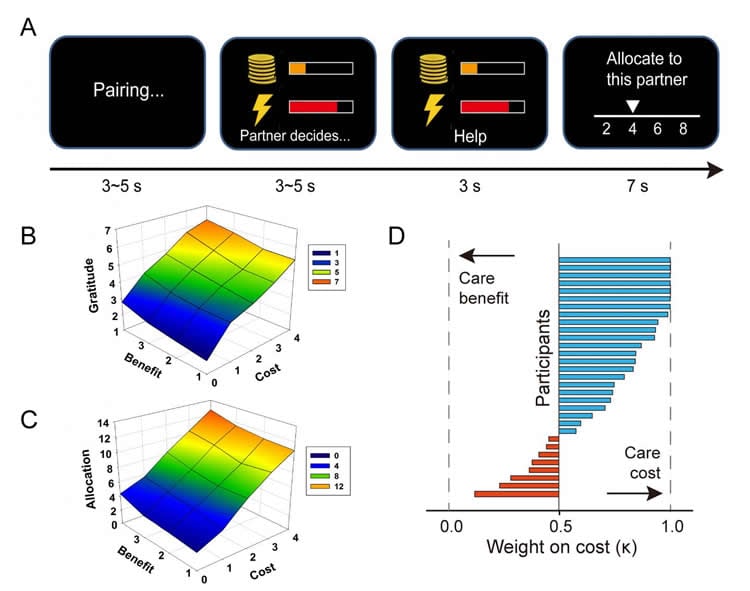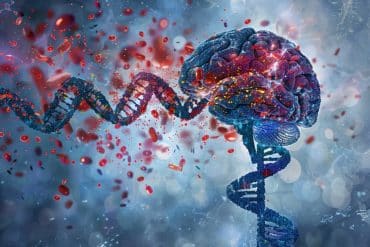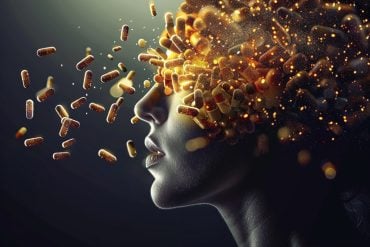Summary: Feelings of gratitude following an altruistic experience may arise as a result of the integration of relevant social information in the perigenual anterior cingulate cortex, researchers report.
Source: SfN.
A brain network that gives rise to feelings of gratitude has been uncovered in new research published in Journal of Neuroscience. The study could spur future investigations into how these “building blocks” transform social information into complex emotions.
Previous neuroimaging research in which participants imagined themselves as survivors of the Holocaust who received food, shelter and clothing from strangers identified the medial prefrontal cortex and perigenual anterior cingulate cortex (pgACC) as brain regions associated with gratefulness.
However, it remains unclear how these parts of the brain translate such altruism into gratitude.
Xiaolin Zhou and colleagues addressed this question by having participants play a social interactive game in which their partner would decide whether to pay different sums of money to in order to prevent the participant from receiving a pain stimulation.
By manipulating the pain intensity and cost to the partner to help the participant, the researchers found that partner cost activated brain regions involved in mentalizing while levels of pain reduction were encoded in regions involved in reward representation. Connectivity analyses revealed that these regions feed information to pgACC, which tracked feelings of gratitude over time.

Their findings indicate that gratitude may arise from the integration of relevant social information in pgACC.
Funding: Funding provided by Natural Science Foundation of China, National Basic Research Program of China, British Academy.
Source: David Barnstone – SfN
Publisher: Organized by NeuroscienceNews.com.
Image Source: NeuroscienceNews.com image is credited to Yu et al., JNeurosci (2018).
Original Research: Abstract for “Decomposing gratitude: representation and integration of cognitive antecedents of gratitude in the brain” by Hongbo Yu, Xiaoxue Gao, Yuanyuan Zhou and Xiaolin Zhou in Journal of Neuroscience. Published May 7 2018.
doi:10.1523/JNEUROSCI.2944-17.2018
[cbtabs][cbtab title=”MLA”]SfN “Thank You Brain: How the Brain Translates Altruism into Feelings of Thankfulness.” NeuroscienceNews. NeuroscienceNews, 7 May 2018.
<https://neurosciencenews.com/altruism-thankfulness-8984/>.[/cbtab][cbtab title=”APA”]SfN (2018, May 7). Thank You Brain: How the Brain Translates Altruism into Feelings of Thankfulness. NeuroscienceNews. Retrieved May 7, 2018 from https://neurosciencenews.com/altruism-thankfulness-8984/[/cbtab][cbtab title=”Chicago”]SfN “Thank You Brain: How the Brain Translates Altruism into Feelings of Thankfulness.” https://neurosciencenews.com/altruism-thankfulness-8984/ (accessed May 7, 2018).[/cbtab][/cbtabs]
Abstract
Decomposing gratitude: representation and integration of cognitive antecedents of gratitude in the brain
Gratitude is a typical social-moral emotion that plays a crucial role in maintaining human cooperative interpersonal relationship. Although neural correlates of gratitude have been investigated, the neurocognitive processes that lead to gratitude, namely the representation and integration of its cognitive antecedents, remain largely unknown. Here, we combined fMRI and a human social interaction task to investigate how benefactor’s cost and beneficiary’s benefit, two critical antecedents of gratitude, are encoded and integrated in beneficiary’s brain, and how the neural processing of gratitude is converted to reciprocity. A co-player decided whether to help a human participant (either male or female) avoid pain at his/her own monetary cost; the participants could transfer monetary points to the benefactor with the knowledge that the benefactor was unaware of this transfer. By independently manipulating monetary cost and the degree of pain reduction, we could identify the neural signatures of benefactor’s cost and recipient’s benefit and examine how they were integrated. Recipient’s self-benefit was encoded in reward-sensitive regions (e.g., ventral striatum), whereas benefactor-cost was encoded in regions associated with mentalizing (e.g., temporoparietal junction). Gratitude was represented in perigenual anterior cingulate cortex (pgACC), the strength of which correlated with trait gratitude. Dynamic causal modeling (DCM) showed that the neural signals representing benefactor-cost and self-benefit passed to pgACC via effective connectivities, suggesting an integrative role of pgACC in generating gratitude. Moreover, gyral ACC plays an intermediary role in converting gratitude representation into reciprocal behaviors. Our findings provide a neural mechanistic account of gratitude and its role in social-moral life.
SIGNIFICANCE STATEMENT
Gratitude plays an integral role in subjective well-being and harmonious interpersonal relationships. However, the neurocognitive processes through which various components and antecedents of gratitude are integrated remain largely unknown. We developed a new interpersonal paradigm to independently and parametrically manipulate two antecedents of gratitude in a helping context, namely benefits to beneficiary and cost to benefactor, to examine their representation and integration in the beneficiary’s brain using fMRI. We found the neural encoding of self-benefits and benefactor-cost in reward- and mentalizing-related brain areas, respectively. More importantly, by examining effective connectivity, we showed that these componential signals are passed to perigenual anterior cingulate cortex, which tracks trial-by-trial gratitude levels. Our study thus provides a neural mechanistic account of gratitude.






